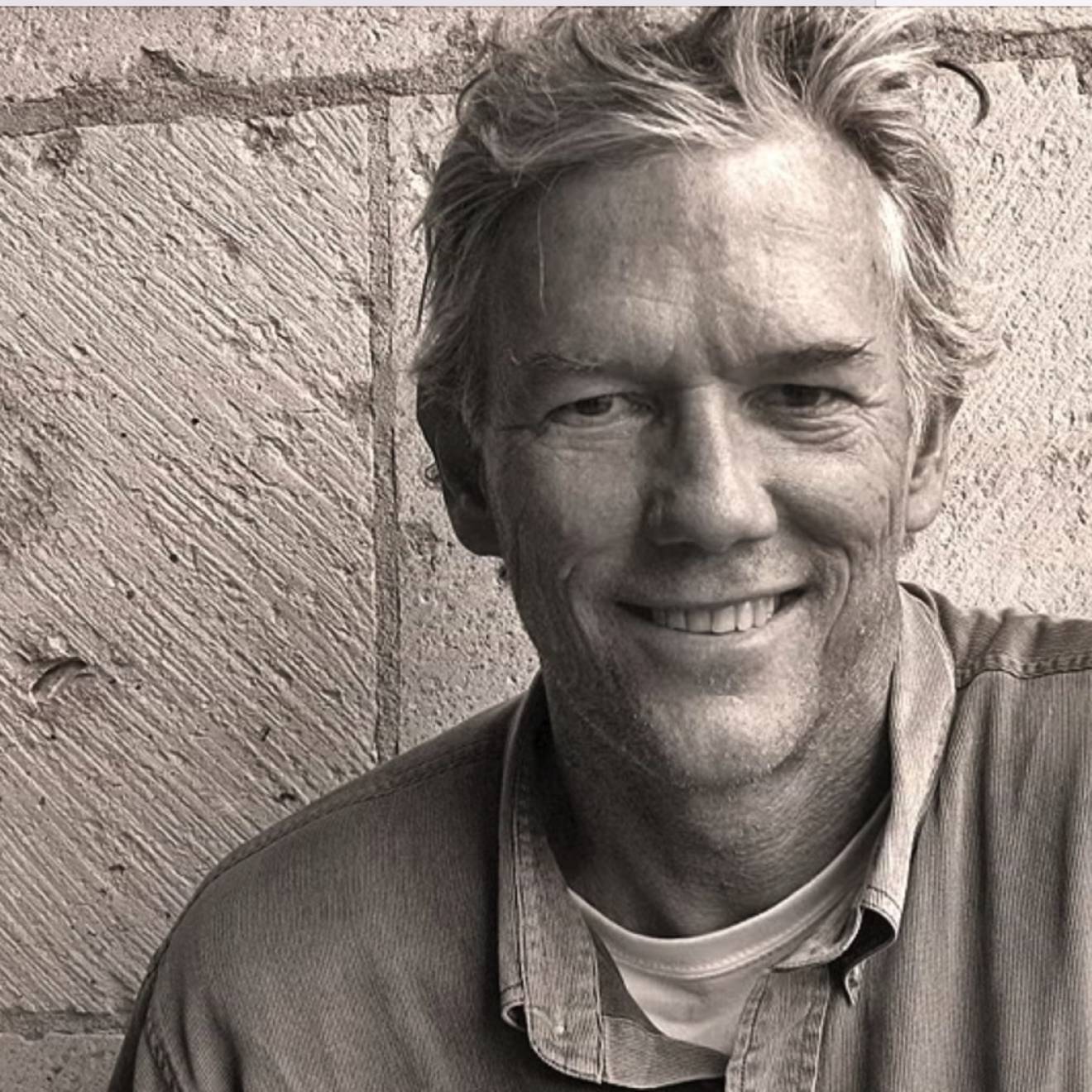Gretchen Kell, UC Berkeley
A “super-experimental” lab launched at the University of California, Berkeley in 2016 to teach students to mine social media for potential human rights violations and war crimes today is producing a new generation of human rights investigators — and they’re being scooped up by employers including Amnesty International, The New York Times, the BBC and the International Criminal Court.
The first university-based effort of its kind, UC Berkeley’s Human Rights Investigations Lab currently trains up to 100 students a year from 20-plus academic majors. By the time they graduate, they’re adept at the painstaking work of collecting and analyzing open source, or public, digital information for use as evidence in national and international criminal courts.
So far, 10 students have been hired during the 2018-2019 school year by “the biggest names in the field” of open source investigations, says Alexa Koenig, executive director of the UC Berkeley School of Law’s Human Rights Center. Notably, nearly all are women. In the lab’s history, most students there — about 70 to 80 percent — have been women.
“I would have no qualms about putting dozens of them into newsrooms, on U.N. fact-finding teams and in disaster response anywhere in the world,” says Félim McMahon, the lab’s director who, as a journalist, helped establish Storyful, the world’s first social media news agency. “This is a skill set very few students have, and they’ve been taught by people at the cutting edge of this emerging field.”
Koenig says that, at first, “we didn’t even know where we’d find students to work in the lab. It was super-experimental — in fact, we regularly told recruits we’d all be working together to create something that hadn’t existed before.
“But we knew that, with the right data science skills, they could help answer compelling human rights questions for our partners around the world.”
Those partners have included non-governmental human rights organization Amnesty International, Reuters news agency and the Syrian Archive, a Syrian-led collective that curates visual documentation of human rights violations.
Recently, Reuters’ 10-story investigation, “Myanmar Burning,” won a Pulitzer Prize for international reporting for exposing the military units and Buddhist villagers responsible for the expulsion and murder of the country’s Rohingya Muslims. For the story “Inside Facebook’s Myanmar Operation Hatebook,” the UC Berkeley lab collected and translated more than 1,000 social media posts that attacked the Rohingya and other Myanmar Muslims.

Credit: Megan Lee/UC Berkeley
The lab’s renown also earned it a visit last month from U.N. High Commissioner Michelle Bachelet, who listened to presentations by 20 students on group’s projects that included scouring social media for information on extrajudicial killings in the Philippines and verifying videos of violence against protesters in Sudan.
“Our students are in high demand globally,” as are the lab’s methods, says Koenig, who, along with McMahon, travels the world to train journalists, attorneys, human rights advocates and others. “We’re creating an entirely new market for how to do human rights work.”
Tech skills for justice
One of the new hires is 21-year-old Haley Willis, who starts a fellowship in June with the New York Times as a visual investigations reporter. Her open source research at UC Berkeley helped track the sale of French arms to Egypt, reconstruct the events of a siege on a university and church in Managua, Nicaragua, and document torture by security forces in Cameroon.
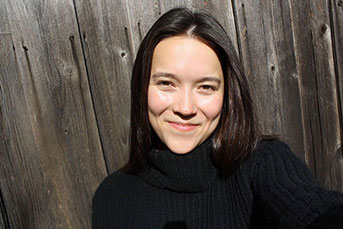
Credit: Haley Willis
“I had no tech background and no idea what open source investigation was at all,” says Willis, who graduates in May with degrees in sociology and media studies. “Now, I’m going to the New York Times. Without the lab, I wouldn’t have this job. I’ve never wanted anything so badly in my life.”
She’ll join the Times’ video unit, which won an Emmy for the video timeline it produced, using video forensics, of the 2017 Las Vegas massacre. This new type of investigative, explanatory journalism collects and analyzes visual evidence — from YouTube videos, photos, social media posts, online databases, satellite images and more — to expose truth.
“Haley and the other students in the lab are doing real-life investigations using the core techniques and skills we look for in graduates or any recruits,” says Malachy Browne, senior story producer at the Times. “These skills will be adapted across newsrooms, are essential to fact-finding across distances and use all the information available on the open web.”
In the UC Berkeley lab, students learn to do reverse image searches, view satellite imagery via Google Earth, monitor livestreamed events and document their findings, and master geolocation and cybersecurity basics and the latest advanced internet search tools — and then apply them through the lens of social justice, “which is so tied to Berkeley,” says Koenig.
Lab is magnetic for women
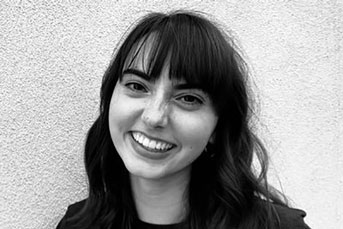
Credit: Jenna Fitzgerald
Justice and accountability also are the focus at Bellingcat, an international collective based in the Netherlands that does open source and social media investigations into crime, conflict and human rights abuses. Founder Elliot Higgins hired Charlotte Godart, 22, from UC Berkeley to run training sessions in Europe on how to use open source tools. She graduated last December with a B.A. in economics.
“There are very few universities training students with the range of skills and level of experience that would make them useful to us straight out of university. The Human Rights Investigations Lab is producing exactly what we’re looking for,” says Higgins.
Godart says that, before she joined the lab, “I’d never even heard of open source investigating, but now I’ve graduated with these skills, and jobs are popping up. Even private companies are increasingly interested, like big banks and firms that need open source analysts to prevent security breaches and to gauge public opinion.”
“I’m really excited,” she says of her new job, adding that open source investigation work “is like solving a puzzle. It requires you to be obsessed with something, consumed by wanting to find the answer so you’ll succeed.”
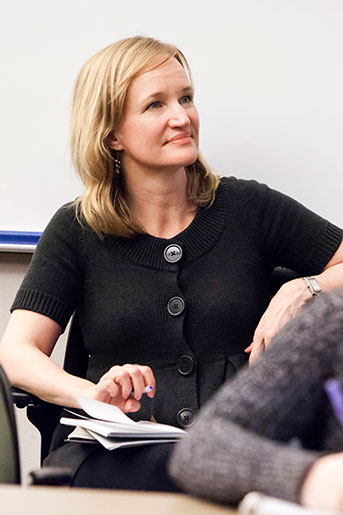
Credit: Brittany Hosea-Small/UC Berkeley
She says she’s also ready for success working in typically male-oriented open source communities because of the “female powerhouses” running UC Berkeley’s lab — Koenig, co-founder Andrea Lampros and most of the students who lead the lab’s teams.
Koenig and Lampros, associate director of the Human Rights Center, intentionally select students “from a lot of different academic disciplines, based on their language ability and knowledge of certain areas of the world,” says Lampros, adding that more than 30 languages have been spoken at the lab since it opened. “It allows us to curate the cohort, to bring as much diversity in as we can.”
But neither Koenig nor Lampros expected such a preponderance of women.
Lampros speculates that the lab “has created a second door into the tech field. People who ordinarily wouldn’t gravitate toward satellite analysis all of a sudden are compelled to learn how to use tools to respond to human rights violations.”
She adds that young women in the lab view Koenig — an attorney and lecturer who’s an expert on human rights, international criminal law and emerging technologies in human rights — as a role model.
Koenig admits she’s “one of the only women in the world trying to figure out how to use these open source methods for justice” and adds that, because of this, “it’s my job to push organizations to hire women.”
Emphasis on resilience
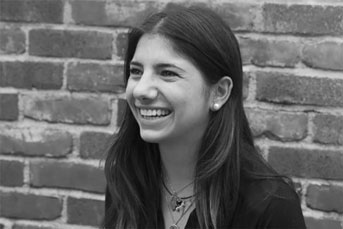
Credit: Light Matter Photography
Ariela Levy, 22, only spent her final semester at UC Berkeley in the lab, but the recent graduate, with degrees in public health and in society and the environment, already is a tactical research assistant doing open source investigations for Amnesty International’s Digital Verification Corps in Washington, D.C.
Levy says that when she heard about the lab as a senior, “it was such a wild thing. I didn’t know it was a line of work. Then, a New York Times article came out that proved a weapons attack in Syria using open source investigation methods. I decided that having a role in bringing attention to these abuses is really, really important.”
Learning open source investigation “takes time to get good at it, it takes a lot of work to verify even one video — four hours, a week, and then you might find out it’s fake,” says Levy. “But the lab has great energy. People work really hard and really well together, and everyone is very motivated. We solve puzzles together and help accomplish something larger.”
Levy appreciates that the lab also trains students to mind their mental health. The material they view can be violent and distressing, “so we learn to never view videos alone or at home, and to first watch them without sound,” she adds. “And there are always people to meet with for coffee, to chat about what you’ve seen.”
“[These students] embody the potential, the hope, the empowerment humanity needs to not be victimized — all you need is critical thinking and access to the internet.”
—Félim McMahon, Human Rights Investigations Lab director
Koenig and Lampros continue to build a resiliency training component for the lab with “the basic best practices for handling horrific information,” says Koenig. “These are young people; we need to create a new generation of human rights investigators who can do this work for the long haul.”
If funding can be secured, says Lampros, a “resiliency garden” will be created behind the Human Rights Center’s new location — a rambling old house on Piedmont Avenue — to provide space for contemplation and distance from the emotional work of the lab.
“Since the first day at the lab,” says Willis, “we’re taught that self-care isn’t selfish. It’s about sustaining yourself to do this work in the future.”
Sam Dubberly, manager of Amnesty International’s Digital Verification Corps, treks to the lab from Europe a few times a year to teach resiliency, something he wishes he’d received as a journalist covering global conflict between 2002 and 2013.
“Our hope is that these UC Berkeley students will take their resiliency training to their places of work when they move on,” he says. “It’s becoming increasingly recognized today as an important issue in the human rights space.”
A solution to negativity

Credit: Amanda Muñoz de Toro
The lab also can change career paths. Alumna Mazelle Etessami, 23, who today is establishing Hong Kong University’s Human Rights Investigations Clinic and is its clinic manager, once aimed to be a broadcast journalist.
But the political climate during her years at UC Berkeley — and “the media’s role in propagating that climate” of disinformation, she says — soured her on TV news. Then, she joined the Human Rights Investigations Lab, where she learned ethical, fact-finding techniques that are “not only one of the most unique and remarkable ways that media outlets can ensure their facts are accurate, but also allow for greater use of content — such as YouTube videos — captured by citizens.
“I felt I was at the forefront of a new wave of journalism and the law, and it was beyond exciting,” says Etessami, whose Hong Kong University clinic, like UC Berkeley’s lab, partners with Amnesty International as part of its Digital Verification Corps.
These experiences have led Etessami to apply to law school, and she starts next fall. “I was inspired to gain the skills necessary to both verify content and eventually to use it in legal cases addressing injustices around the world,” she says.
“Lawyers need to be trained in these key competencies,” stresses Koenig, adding that she plans to write a handbook to disseminate the lab’s methods.
In addition to technical training, Etessami says the lab has given her “a small but mighty community” of UC Berkeley peers in the open source investigations community. They collaborate on fact-finding, test new digital tools and support each other’s work.
“It’s an extremely cooperative, caring community of practitioners who all look out for each other,” says McMahon of the growing network of former and current lab mates.
“They are part of the solution to a lot of negativity in the world,” he says. “They embody the potential, the hope, the empowerment humanity needs to not be victimized — all you need is critical thinking and access to the internet.”
“Once students go through this training,” McMahon adds, “it’s like their eyes are open, like someone who just learned to read. Because of their education, they can see more. Their CVs stand out, and people want to hire them.”

